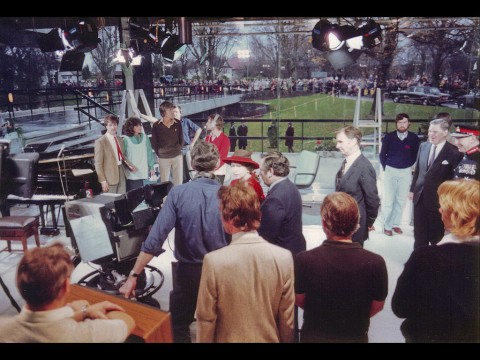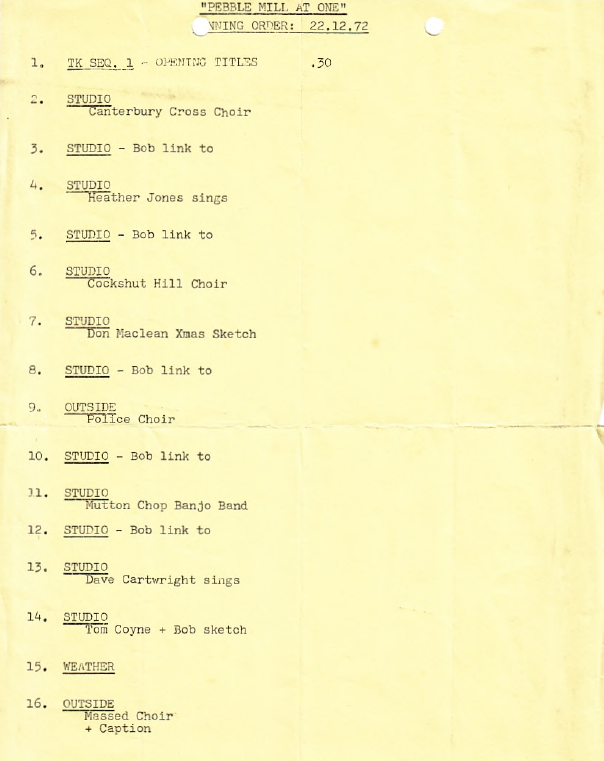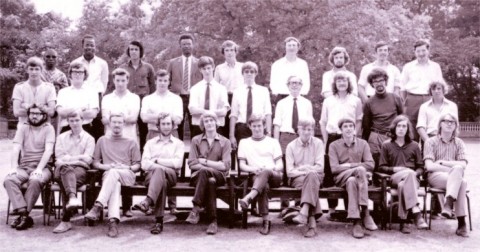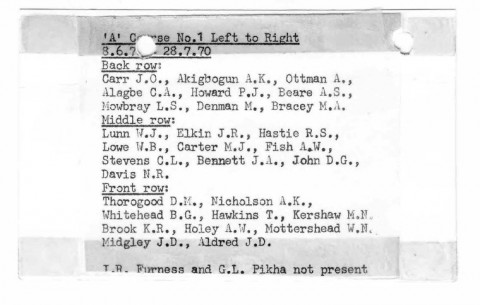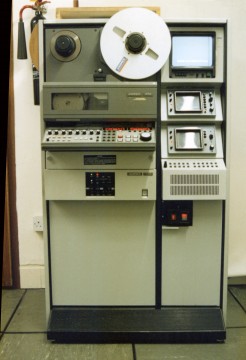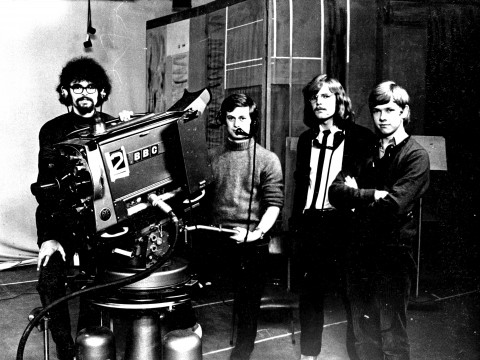
Copyright resides with the original holder, no reproduction without permission.
The photo is from an ‘A’ Course held at BBC Wood Norton in July 1970. Included in the group are trainees (left to right): Dave John, with Pebble Mill’s Keith Brook on camera, John Bennett, Tony Nicholson (he worked for the ILEA’s TV unit, (Inner London Education Authority). They made OU type programmes before the OU began).
The camera is probably a Pye Mk 6: http://www.tvcameramuseum.org/pye/mk6/p1.htm
Thanks to Mark Kershaw for sharing the photo.
Mark adds the following information:
‘The pic is August 1970, the final part of our A1 training course, where the 10 TV people split off from the engineers to train in the studio – then called “the Phoenix”. It was a converted indoor badminton court. I was told it was originally built with the insurance money after the top floor of Wood Norton hall burnt off, and the BBC didn’t rebuild it, just put a roof on! Hence called Phoenix as out of the ashes! (Not sure if true or not)! Later the bar took over the name. For intested the Studio now called Studio A is still in use!
The camera is (I think) a Pye mark 6, it was one of a group from a recently decommissioned B/W OB Unit, as they had all just gone colour. The OB scanner (that looked just like the Dinky model) was parked behind the studio and we worked it like a drive in. For info at that time Wood Norton had only one colour camera – an EMI2001, it was used to train the engineers on how to line them up –we were not even allowed to touch it!’
Keith Brook adds some more detail:
If my memory serves me correctly, the ‘A’ Course, starting in 1970, replaced the old Technical Operations (TO) Course to reflect the less technical aspect of life as a cameraman or sound bloke. And, yes, a man’s world in those distant days.
There was still loads of technical stuff – knowledge of the tools is crucial to any job, not just TV or sound – but the ‘A’ courses concentrated more on learning the basics of how to operate the gear.
The course lasted 3 months, and A1 took place in the middle of summer which was a scorcher that year. Bliss!
In those days, the ‘A Block’ was the only one built of bricks and mortar. ‘B block’, where I lay my drunken head, was still a wooden hut from the war days, as were the classrooms!
The course finished with two important items.
Firstly, a programme that we were required to write, produce and shoot and which is sadly lost in the old 405 line cemetery. That’s me on the camera and the reason you can only see one leg is that I’m using my knee to stop the bloody thing from rising due to the heat!!
Secondly was the end of course exam. I scored 97% despite having no sleep after crashing my car on the M5 after returning from an OB at Radio Merseyside. After moving the mess to the side they reopened the motorway. Intrigued at what might be in the boot of my upturned car, they opened it and everything I owned in the world spilled back onto the motorway, which had to be closed again. I was picked up from hospital in the morning by the BBC chauffeur who drove at 20mph so as not to alarm me. He was actually making me even more nervous because I was worried about missing the exam.
A few days earlier I’d commented that no one had crashed their car that week. Dropping cars into the ditch halfway between the school and the BBC Club was a weekly event. Evidently is was my turn.
After that it was off to TV Centre for me and then, two years later, Pebble Mill.
Happy days!!’
